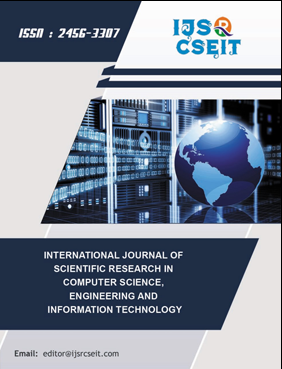Comparative Analysis of Machine learning Model for Diabetes Prediction
Keywords:
Machine Learning, Random Forest, KNN, ANN, Naives BayesAbstract
Diabetes is arguably the worst disease on the planet. It's not simply a disease; it also increases the chance of developing many other illnesses, such as renal problems, heart attacks, and visual impairments. The most difficult thing a physician can do, whether a patient has diabetes or not, is determine how likely a patient is to get the illness in the early stages. Blood glucose, BMI, age, gender, and family history are some of the interrelated elements that contribute to these problems. A range of Machine-Learning (ML) algorithms have been employed to detect and diagnose the illness in order to stop further health problems. Comparing the machine learning models for the diabetes dataset is the main focus of this work. The PIMA dataset used in this study was acquired from the UCI Repository. There are 9 features in the dataset (768 entries): glucose, pregnancies, skin thickness, insulin, BMI, diabetes pedigree function, and outcome. Random Forest, ANN (artificial neural network), Decision Tree, KNN, and Naïve Bayes are a few of the machine learning algorithms that are implemented. Recall, f1 score, accuracy, and precision are the performance metrics used. With an accuracy of over 79% in comparison to the other predictor, the data indicates that the kNN is the most accurate.
📊 Article Downloads
References
Kalyankar, G. D., Poojara, S. R., & Dharwadkar, N. V. (2017, February). Predictive analysis of diabetic patient data using machine learning and Hadoop. In 2017 international conference on I-SMAC (IoT in social, mobile, analytics and cloud)(I-SMAC) (pp. 619-624). IEEE.
Gupta, S., Verma, H. K., & Bhardwaj, D. (2021). Classification of diabetes using Naive Bayes and support vector machine as a technique. In Operations Management and Systems Engineering: Select Proceedings of CPIE 2019 (pp. 365-376). Springer Singapore.
Saravanan, Renuka, and Pothula Sujatha. "A state of art techniques on machine learning algorithms: a perspective of supervised learning approaches in data classification." In 2018 Second international conference on intelligent computing and control systems (ICICCS), pp. 945-949. IEEE, 2018.
Nai-Arun, N., & Moungmai, R. (2015). Comparison of classifiers for the risk of diabetes prediction. Procedia Computer Science, 69, 132-142.
Mujumdar, A., & Vaidehi, V. (2019). Diabetes prediction using machine learning algorithms. Procedia Computer Science, 165, 292-299.
Anaconda Inc., Anaconda Distribution, Anaconda, 2019
S. Raschka, J. Patterson, C. Nolet, Machine learning in python: main developments and technology trends in data science, machine learning, and artificial intelligence. Information 11(4) (2020). https://doi.org/10.3390/info11040193
G. Nguyen et al., Machine learning and deep learning frameworks and libraries for large-scale data mining: a survey. Artif. Intell. Rev. 52(1), 77–124 (2019). https://doi.org/10.1007/s10462- 018-09679-z.
Downloads
Published
Issue
Section
License
Copyright (c) 2024 International Journal of Scientific Research in Computer Science, Engineering and Information Technology

This work is licensed under a Creative Commons Attribution 4.0 International License.




